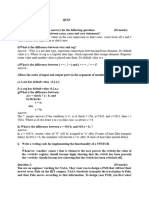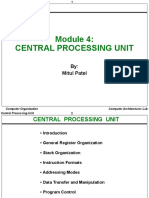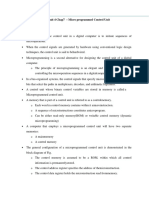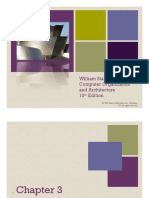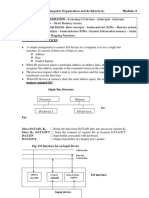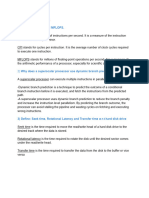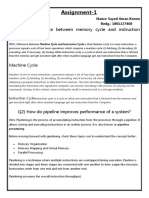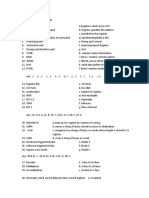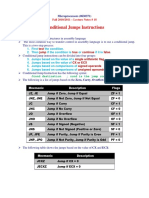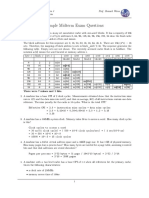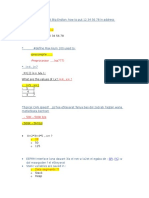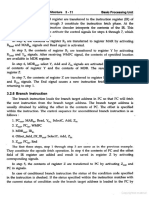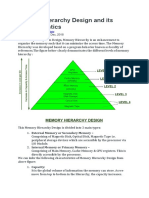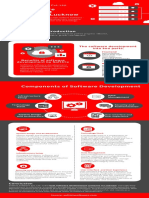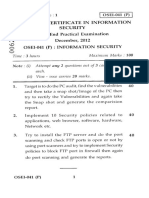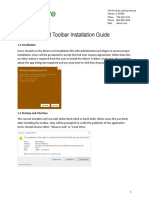0% found this document useful (0 votes)
979 views16 pagesComputer Memory Hierarchy Guide
The document discusses the memory hierarchy in computer systems. It describes the different levels of memory including primary (internal) memory like main memory and cache, and secondary (external) memory like magnetic disks. It explains the characteristics of the memory hierarchy like performance, ability, access time, and cost per bit. It also covers memory hierarchy properties including inclusion, coherence, and locality of reference. Cache memory and how it improves performance is discussed. The document provides details on minimizing cache misses and improving cache performance. Virtual memory is also summarized which allows programs to exceed physical memory size by storing portions on secondary storage.
Uploaded by
Anshu Kumar TiwariCopyright
© © All Rights Reserved
We take content rights seriously. If you suspect this is your content, claim it here.
Available Formats
Download as PDF, TXT or read online on Scribd
0% found this document useful (0 votes)
979 views16 pagesComputer Memory Hierarchy Guide
The document discusses the memory hierarchy in computer systems. It describes the different levels of memory including primary (internal) memory like main memory and cache, and secondary (external) memory like magnetic disks. It explains the characteristics of the memory hierarchy like performance, ability, access time, and cost per bit. It also covers memory hierarchy properties including inclusion, coherence, and locality of reference. Cache memory and how it improves performance is discussed. The document provides details on minimizing cache misses and improving cache performance. Virtual memory is also summarized which allows programs to exceed physical memory size by storing portions on secondary storage.
Uploaded by
Anshu Kumar TiwariCopyright
© © All Rights Reserved
We take content rights seriously. If you suspect this is your content, claim it here.
Available Formats
Download as PDF, TXT or read online on Scribd
/ 16






